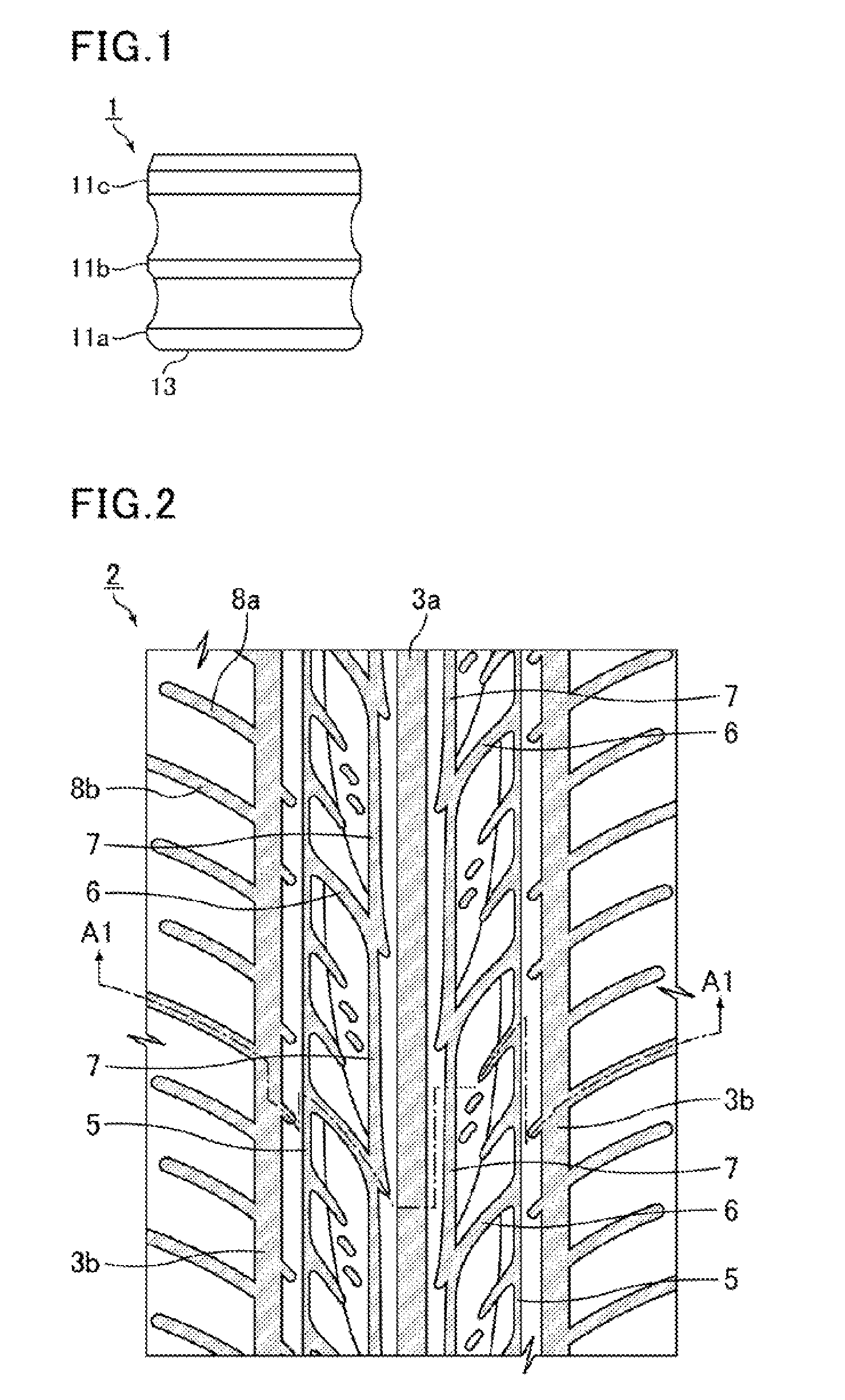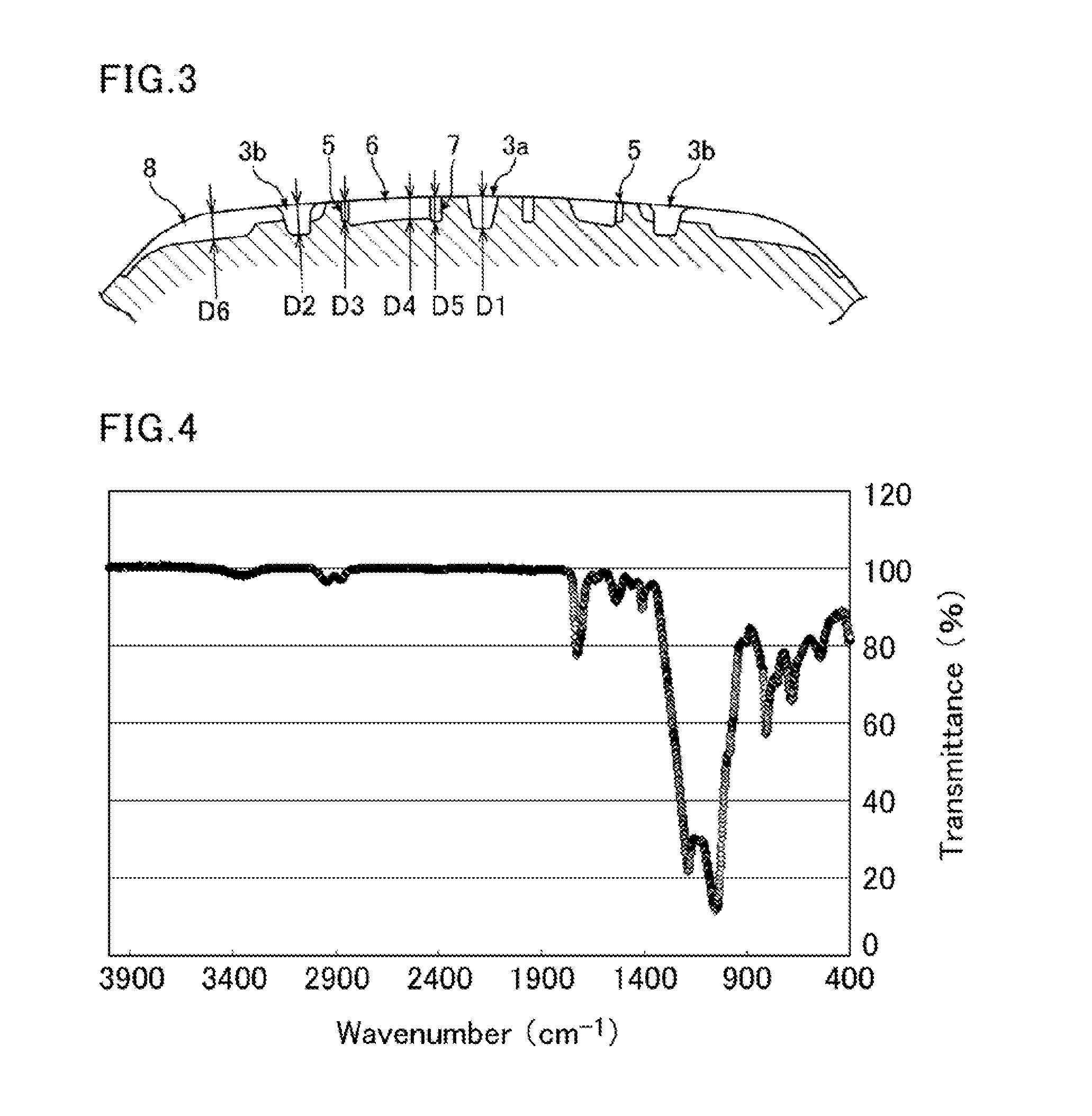Surface modification method and surface-modified elastic body
a technology of elastic bodies and surface modification methods, which is applied in the field of surface modification methods and surface-modified elastic bodies, can solve the problems of pulsating during administration, affecting the appearance of road signs or signboards, and the sliding properties of elastic bodies are unfortunately small, so as to improve the appearance and appearance of road signs or signboards, and enhance the sliding properties of elastic bodies. , the effect of less pressure loss
- Summary
- Abstract
- Description
- Claims
- Application Information
AI Technical Summary
Benefits of technology
Problems solved by technology
Method used
Image
Examples
example 1
[0124]A chlorobutyl rubber (degree of unsaturation: 1 to 2%) containing isoprene units was cross-linked by triazine to prepare a vulcanized rubber gasket (vulcanized at 180° C. for 10 minutes), which was then immersed in a solution of benzophenone in acetone (3 wt %) so that benzophenone was adsorbed onto the surface of the rubber vulcanizate, followed by drying. Then the surface of the vulcanized rubber gasket was irradiated with LED-UV light having a wavelength of 365 nm for 10 minutes to chemically bond benzophenone to the surface. Thereafter, the surface was washed with acetone to remove unreacted benzophenone. The resulting rubber vulcanizate was taken out and dried.
[0125]The dried vulcanized rubber gasket was immersed in an aqueous acrylic acid solution (2.5 M, 18 g of acrylic acid dissolved in 100 mL of water) in a glass reaction container. Then the gasket was irradiated with LED-UV light having a wavelength of 365 nm for one hour to cause radical polymerization and thereby g...
example 2
[0128]A surface-modified elastic body (a polymer brush layer on the surface) was obtained as in Example 1, except that the polymerization time (time of LED-UV light irradiation) of the fluorine-containing functional monomer solution was changed to 30 minutes.
example 3
[0129]A chlorobutyl rubber (degree of unsaturation: 1 to 2%) containing isoprene units was cross-linked by triazine to prepare a vulcanized rubber gasket (vulcanized at 180° C. for 10 minutes), which was then immersed in a solution of benzophenone in acetone (3 wt %) so that benzophenone was adsorbed onto the surface of the rubber vulcanizate, followed by drying.
[0130]The dried vulcanized rubber gasket was immersed in an aqueous acrylic acid solution (2.5 M, 18 g of acrylic acid dissolved in 100 mL of water) in a glass reaction container. Then the gasket was irradiated with LED-UV light having a wavelength of 365 nm for 30 minutes to cause radical polymerization and thereby grow non-functional polymer chains on the surface of the rubber. Then, the surface was washed with water and dried.
[0131]Next, the dried vulcanized rubber gasket was immersed in a solution of benzophenone in acetone (3 wt %) so that benzophenone was adsorbed onto the surface of the polyacrylic acid, followed by d...
PUM
| Property | Measurement | Unit |
|---|---|---|
| wavelength | aaaaa | aaaaa |
| wavelength | aaaaa | aaaaa |
| chemical shifts | aaaaa | aaaaa |
Abstract
Description
Claims
Application Information
 Login to View More
Login to View More - R&D
- Intellectual Property
- Life Sciences
- Materials
- Tech Scout
- Unparalleled Data Quality
- Higher Quality Content
- 60% Fewer Hallucinations
Browse by: Latest US Patents, China's latest patents, Technical Efficacy Thesaurus, Application Domain, Technology Topic, Popular Technical Reports.
© 2025 PatSnap. All rights reserved.Legal|Privacy policy|Modern Slavery Act Transparency Statement|Sitemap|About US| Contact US: help@patsnap.com



